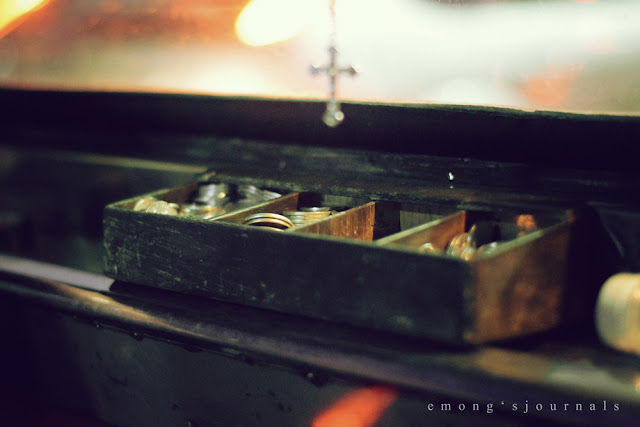Riding in jeepneys is a fun way to travel around Metro Manila – but commuting via these urban transports is not as simple as getting from point A to point B.
What is a jeepney
First, the nomenclatures. Jeepneys are known for their crowded seating and flamboyant decorations. They were originally made from U.S. military jeeps left over from World War II. The word jeepney is a portmanteau from a combination of "jeep" and "jitney."
Some folks say the name came from the words "jeep" and "knee", because the passengers sit in very close proximity that their knees bumped to each other most of the times during the ride.
Please note that jeepneys can really be entertaining -- but they‘re best for short trips. Anything longer than 30 minutes will be uncomfortable.
The correct way of riding the jeepney
1. Read the signs.
The jeepneys are marked with destination names, and sometimes the routes where they should pass. A warning, though, as some of the locations have already been renamed - like "Espana," which is now "Quezon Boulevard"; or "Raon" which is now "Gonzalo Puyat Street." It's always a good practice to ask the driver first just to make sure.
2. Bring exact change.
Don't pay using your 100 peso bills unless you want to be shortchanged later on. Some drivers, if not all, tend to lose memory of everything. Don't hand the driver anything larger than a 20 peso bill. A 10 peso coin is ideal.
Metro Manila Fare: As of March 2016, P7.00 for first 4 kms and P1.00 every km thereafter. Students and senior citizens get 20% discounts.
3. Payment system.
There is no payment system. If you're not sitting at the front, pass your money forward, and somebody will take your money and pass it along to the driver. Just remember to say "Bayad Po!" loud enough for the driver to know the money came from you.
If you happen to be the person to pass along the money to the driver, you instantly become the official money-changer. All passengers will now recognize you as the one in charge for passing their money fares.
4. Getting off.
Unlike in most western countries, these urban transports will stop anywhere and any time a passenger wishes to get off. All you need to do is to clink a coin a few times on the hand rail -- or if this doesn't work, just shout, "Para!"
Some drivers are innovative and tech-savvy. They install strings on top of the handrails which you can pull as signal to stop.
5. Safety issues.
When not caught in traffic, jeepney drivers like to drive really, really fast. Keep your hands, arms and feet inside the vehicle.
Hold on to bags and purses tightly, passing motorcycle thieves (notoriously called riding-in-tandem criminals) will grab it and speed off. Carry your backpacks on your chest and keep your jewelry inside your pockets, they're safer that way.
WHAT DO YOU THINK OF THIS POST?
Share your ideas by commenting.
What is a jeepney
First, the nomenclatures. Jeepneys are known for their crowded seating and flamboyant decorations. They were originally made from U.S. military jeeps left over from World War II. The word jeepney is a portmanteau from a combination of "jeep" and "jitney."
Some folks say the name came from the words "jeep" and "knee", because the passengers sit in very close proximity that their knees bumped to each other most of the times during the ride.
Please note that jeepneys can really be entertaining -- but they‘re best for short trips. Anything longer than 30 minutes will be uncomfortable.
The correct way of riding the jeepney
1. Read the signs.
The jeepneys are marked with destination names, and sometimes the routes where they should pass. A warning, though, as some of the locations have already been renamed - like "Espana," which is now "Quezon Boulevard"; or "Raon" which is now "Gonzalo Puyat Street." It's always a good practice to ask the driver first just to make sure.
2. Bring exact change.
Don't pay using your 100 peso bills unless you want to be shortchanged later on. Some drivers, if not all, tend to lose memory of everything. Don't hand the driver anything larger than a 20 peso bill. A 10 peso coin is ideal.
Metro Manila Fare: As of March 2016, P7.00 for first 4 kms and P1.00 every km thereafter. Students and senior citizens get 20% discounts.
3. Payment system.
There is no payment system. If you're not sitting at the front, pass your money forward, and somebody will take your money and pass it along to the driver. Just remember to say "Bayad Po!" loud enough for the driver to know the money came from you.
If you happen to be the person to pass along the money to the driver, you instantly become the official money-changer. All passengers will now recognize you as the one in charge for passing their money fares.
4. Getting off.
Unlike in most western countries, these urban transports will stop anywhere and any time a passenger wishes to get off. All you need to do is to clink a coin a few times on the hand rail -- or if this doesn't work, just shout, "Para!"
Some drivers are innovative and tech-savvy. They install strings on top of the handrails which you can pull as signal to stop.
5. Safety issues.
When not caught in traffic, jeepney drivers like to drive really, really fast. Keep your hands, arms and feet inside the vehicle.
Hold on to bags and purses tightly, passing motorcycle thieves (notoriously called riding-in-tandem criminals) will grab it and speed off. Carry your backpacks on your chest and keep your jewelry inside your pockets, they're safer that way.
WHAT DO YOU THINK OF THIS POST?
Share your ideas by commenting.




Comments
Post a Comment